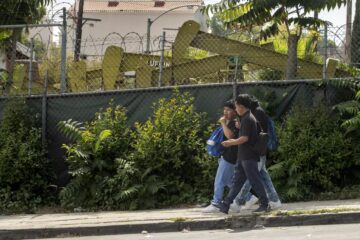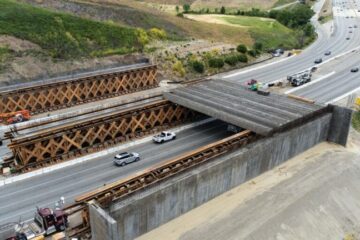Ventura County Plans to Steer Its Transit Policy Away From Cars
Supervisors will include increasing the use of bicycles, buses, trains in area’s growth guidelines.
Source of this article – Los Angeles Times, January 25, 2006
By Catherine Saillant, Times Staff Writer
Can a Southern California county manage its growth without continually building new highways or widening existing ones?
The Ventura County Board of Supervisors would like to think the answer is yes.
On Tuesday, supervisors unanimously agreed that the county’s transportation policy should embrace increased use of bicycles, buses, trains and carpools and move away from a dependency on cars.
Although the vote provides neither money nor specifics, it sends a message that Ventura County will address traffic congestion in ways different from the past, said board Chairwoman Linda Parks, coauthor with Supervisor Steve Bennett of the measure.
“We can’t build our way out of the problem,” Parks said. “We need to look at alternatives.”
Supervisors did not address how the transportation goals, to be written into the county’s growth guidelines, would fit into a broader regional transportation network that relies heavily on freeways and road building to accommodate growth.
No mention was made of Gov. Arnold Schwarzenegger’s $222-billion plan to beef up California’s aging infrastructure by widening freeways and building new roads, among other things.
Ventura County was left out of transportation funding in the proposal unveiled by the governor earlier this month. But county transit officials have said portions of one of the plan’s projects, widening the 101 Freeway in Santa Barbara, may extend into Ventura County.
After the vote, Bennett said an emphasis on mass transit and alternative transportation projects ought to play a big role in any long-range planning for California.
But he cautioned that he does not know enough about Schwarzenegger’s proposals to judge how much they include such projects.
The adopted goals call for a countywide system of convenient mass transit; increased train service, possibly including new commuter lines, between Los Angeles and Santa Barbara counties; and a system of bike lanes linking all 10 of Ventura County’s cities.
“The board is not saying, by any means, that they are opposed to any one project,” Bennett said. “But it is saying that at least here in Ventura County we need to accelerate our thinking about becoming less reliant on cars.”
Some progress has already been made, Supervisor John Flynn said. A 15-mile, tree-lined bicycle trail connects Ventura and Ojai. And transit officials have for years tried to increase bus and rail ridership, he said.
Any long-term solutions for Ventura County will require the cooperation of cities and the Ventura County Transportation Commission, which prioritizes and distributes transit funding, Flynn said.
A handful of speakers applauded the supervisors for taking a stand.
“I’m very appreciative of this,” said Clyde Pratt, spokesman for a group that has been critical of past road-widening plans near rural Somis. “It’s the type of thinking and approach that will lead to a county that we all want to see.”
Patricia Arkin of Somis called it a “rare opportunity” to attempt new solutions to traffic congestion.
“If the discussion doesn’t start and leadership is not provided, nothing happens,” Arkin said. “Let’s not be the last county to do it the wrong way, but the first county to do it the right way.”


